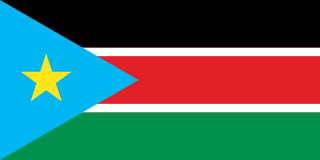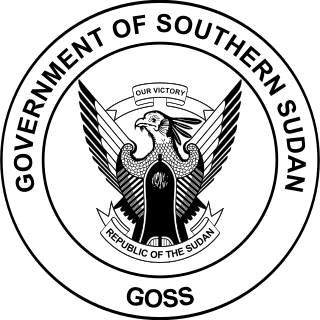 W
WThe Cabinet of South Sudan is the Executive Branch of the Government of South Sudan. The Cabinet members are appointed by the President and report to the President.
 W
WThe Transitional Constitution of the Republic of South Sudan, 2011 was drafted by a Southern Sudan Constitutional Drafting Committee. It was published in April 2011.
 W
WThe Constitution of Southern Sudan was the 2005 Interim Constitution of Southern Sudan, as established by the Government of Sudan and the Sudan People's Liberation Army/Movement within the framework of the Comprehensive Peace Agreement ending the Second Sudanese Civil War, signed into practice on 9 January 2005.
 W
WCorruption in South Sudan is among the worst in the world. The nation's elites have developed a kleptocratic system that controls every part of the South Sudanese economy. This system has taken shape quickly in a relatively short period, South Sudan having won self-rule in 2005 while remaining part of Sudan, and having been accorded full sovereignty in 2011. The nation was ranked fifth on Transparency International's 2014 list of most corrupt nations, preceded only by Somalia, North Korea, Sudan, and Afghanistan.
 W
WThe Council of States was established in 2011 by the interim constitution of South Sudan 2011. It is one of the two chambers comprising the National Legislature of South Sudan.
 W
WThe Judiciary of Southern Sudan, or JOSS, is a constitutionally mandated government branch that oversees the court systems of South Sudan. The Chief Justice of the Supreme Court of South Sudan is the head of the judiciary, and is held accountable to his job by the President of South Sudan.
 W
WThis article lists the heads of state of South Sudan since the establishment of the Southern Sudan Autonomous Region within Sudan in 1972.
 W
WThe Transitional National Legislative Assembly is one of the two chambers comprising the Transitional National Legislature of South Sudan.
 W
WThe Transitional National Legislature of South Sudan is the legislature of South Sudan. The Transitional National Legislature consists of:The Transitional National Legislative Assembly; and The Council of States.
 W
WRamciel is a location in South Sudan that will serve as the site of the future national capital. John Garang, the first president of Southern Sudan, allegedly wanted to place the national capital in Ramciel during his administration, but he died before South Sudan achieved independence and its largest city of Juba became the capital instead.
 W
WThe South Sudanese passport is given to citizens of South Sudan for international travel. The Republic of South Sudan started issuing internationally recognised electronic passports in January 2012. The passports were officially launched by President Salva Kiir Mayardit on 3 January 2012 at a ceremony in the capital city of Juba. The new passport will be valid for five years.
 W
WThe Southern Sudan Autonomous Region was an autonomous region that existed in Southern Sudan between 1972 and 1983. It was established on 28 February 1972 by the Addis Ababa Agreement which ended the First Sudanese Civil War. The region was abolished on 5 June 1983 by the administration of Sudanese President Gaafar Nimeiry. Revocation of southern autonomy was one of the causes of the Second Sudanese Civil War which would continue until January 2005, when southern autonomy was restored.
 W
WSouthern Sudan was an autonomous region consisting of the ten southern states of Sudan between its formation in July 2005 and independence as the Republic of South Sudan in July 2011. The autonomous government was initially established in Rumbek and later moved to Juba. It was bordered by Ethiopia to the east; Kenya, Uganda, and the Democratic Republic of the Congo to the south; and the Central African Republic to the west. To the north lies the predominantly Arab and Muslim region directly under the control of the central government. The region's autonomous status was a condition of a peace agreement between the Sudan People's Liberation Army/Movement (SPLA/M) and the Government of Sudan represented by the National Congress Party ending the Second Sudanese Civil War. The conflict was Africa's longest running civil war.
 W
WThe Southern Sudan Legislative Assembly was established in 2005 by the Interim constitution of the Southern Sudan 2005. Pending elections in 2010, all 170 members were appointed according to the following formula as per the Comprehensive Peace Agreement (CPA): 70% of seats to SPLM, 15% to NCP, and 15% to other parties. The Assembly met in Juba, The capital of Southern Sudan and Central Equatoria State.
 W
WThe vice president of South Sudan is the second highest political position obtainable in South Sudan. Additionally, a temporary position called First Vice President was created in August 2015.